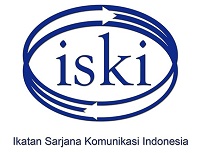Abstract
May 27th, 2006, a-5.9-Richter scale-of-earthquake is collapsing Jogja and its surrounding. More than 5.800 inhabitants dead, hundreds of thousands other were injured. The city collapsed, along with its economy which suffered at least 8-billion-rupiahs-loss. Days after the earthquake, there were complaints everywhere concerning the system of logistic supply for the victims. The lack of food, unreachable locations, the slow treatment of injured victims were seen everywhere. From communication perspective, these complaints marked the lack of quality in communication system as main part of post-disaster-management. To overcome such problems, the local government in disaster area must build SCM—supply chain management—as the approach to communication-management system in order to distribute logistics for the victims. SCM consisted of three elements: supply chain network, supply chain process, and supply chain management. Although based on management approach, SCM covered comprehensive issues such as the importance of data, research, goals identification, transportation facilities, along with moral, attitude, and cultural sensitivity.
Keywords
komunikasi, supply-chain-management, krisis, bencana, sistem komunikasi
References
gustini, Prima Mulyasari. 2006. “Pentingnya Integrasi dan Koordinasi”. Artikel dalam HU Pikiran Rakyat, tanggal 1 Juni.
Astuti, Santi Indra. 2006. “Manajemen Krisis Ala Rakyat”. Artikel dalam HU Kompas, tanggal 6 Juni.
Astuti, Santi Indra. 2006. “Bencana, Wujud Penderitaan nan Agung”. Artikel dalam HU Kompas tanggal 18 Juni.
























